Search Results

Donna
The cancer diagnosis was devastating, and the loss was more than anyone should have to bear. We lost our wonderful son, brother, fiance & friend Larry, on August 15th. He was 30 years and 18 days old. He had his whole future ahead of him with his soul mate, Vicki. Together, they were planning a wedding for seven weeks away, making plans for children and looking forward to a long life. He never made it down the aisle, never got to raise those babies and was taken from this earth way too soon. Larry was a bright light in our lives and is missed every second of every day.
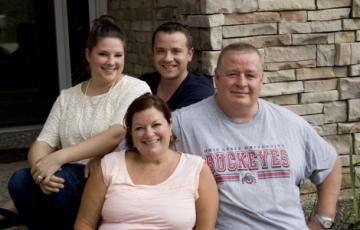
Alison
My story began in the summer of 2012. My cancer-fighting hero, who happens to be my father in law, Dave Warner, was diagnosed that July. Not only is he my father in law, but I call him Dad, because that is exactly what he is. In June 2012, Dad started to notice a large lymph node that was swollen in his groin. My immediate reaction was “Go to the doctor and get antibiotics. I'm sure it's just an infected lymph node that amoxicillin can clear up! Right??” Wrong. Never did I expect the next step to be a biopsy to see if it was cance

Babara
On October 3, 2019, I was diagnosed with chronic myeloid leukemia (CML) at the age of 58. I was asymptomatic, so I was in total denial that I had leukemia. I had just attended my 40th high school reunion, and I thought my health was great. After leaving the oncologist's office that day, I went home and discovered that I had blood in my urine, or was it post-menopausal bleeding? I was so confused and frustrated. I immediately made an appointment with my primary care physician to get a referral because I wasn't sure what kind of doctor I needed to see. Turns out, I also had cervical cancer.
Stem Cell Transplantation
The goal of stem cell transplantation is to cure the patient’s cancer by destroying the cancer cells in the bone marrow with high doses of chemotherapy and then replacing them with new, healthy blood-forming stem cells. The healthy blood stem cells will grow and multiply forming new bone marrow and blood cells. There are two main types of stem cell transplantation. They are

Melinda
I am currently 30 years old and was diagnosed with non-Hodgkin lymphoma (PMBCL) when I was 27, almost 28 years old.
I was pregnant the day I was diagnosed, luckily 39 weeks, and ended up giving birth the same day I found out I had a massive tumor in my mediastinum. I was biopsied the next day and had to leave my 5-day-old baby and 2-year-old to go to the emergency room for a life-threatening emergency called svc syndrome.

Paul
I was first diagnosed with acute lymphoblastic leukemia (ALL) at age 25 and since then I've had two bone marrow transplants and CAR-T. For the past 8 years I have been on and off "healthy" and undergoing or actively recovering from treatment. I talked about some of the things I did during those treatments to help my motivation and morale, but there is a lot about the treatments themselves that were unique to someone like me, a mixed race, young adult with blood cancer.
Clinical Trials
Taking part in a clinical trial may be the best treatment choice for some blood cancer patients. There are trials for patients at every stage of treatment as well as those in remission. Virtually all of today's standard treatments for cancer are based on previous clinical trials.
Clinical Trial Support Center
Work one-on-one with an LLS Clinical Trial Nurse Navigator who will help you find clinical trials and personally assist you throughout the entire clinical-trial process.
Disease Complications
As myelofibrosis (MF) progresses, complications may arise:

Tina
As a lymphoma survivor, I want to take a moment to share my personal journey, as well as tell you all how The Leukemia and Lymphoma Society (LLS) was with me every step of the way.
It all started in March 2018. We had been living in the UK with our two young daughters, and life was good! I had been feeling tired and had this hollow sound behind my ear. I saw doctors in both the UK and the U.S. who assured me it was most likely just my body trying to get over a sinus infection.
Follow-Up Care
Follow-up medical care is important for every Hodgkin lymphoma patient. Follow-up care helps the doctor monitor you to see if disease has recurred or relapsed, or to see if more treatment is needed. Talk to your doctor about how often to have follow-up visits and what laboratory tests, scans, or other imaging you need. It is important to get a record of your cancer treatment including the drugs you received so that your doctor can follow up on specific long-term effects that may be associated with your treatment.
Lymph Node Biopsy
A lymph node biopsy detects cancer cells in lymph nodes and confirms a lymphoma diagnosis. Surgery is used to obtain all or part of a lymph node (or sometimes another tumor site) because it gives the pathologist or hematopathologist more tissue to examine. The tissue examination may detect cancerous tumors, noncancerous masses or infection. Since treatment differs for various types of blood cancers, a precise diagnosis is needed. A second opinion from a pathologist or hematopathologist may be needed to make the correct diagnosis.
How Is It Done?
Resources for Survivors
Survivorship WorkbookUse this Survivorship Workbook to collect all the important information you need throughout diagnosis, treatment, follow-up care and long-term management of a blood cancer.
Lori
Lori’s journey to becoming a Leukemia & Lymphoma Society (LLS) volunteer began back in 2002 through her own experience with being diagnosed with Myelofibrosis (MF). Lori had just embarked on a new job as a real estate agent to a new home builder when she began to feel extremely tired and have pain in her hands. She chalked up her sickness to a case of the flu; however, after deciding to go to her doctor, he recommended some blood work which came back showing high white counts. Her doctor referred her to an Oncologist who did a bone marrow biopsy.
Signs and Symptoms
Signs and symptoms are changes in the body that may indicate the presence of disease. A sign is a change that the doctor sees during an exam or in a laboratory test result. A symptom is a change that a patient can see and/or feel.
It is common for a child with ALL to feel a loss of well-being because of the lack of normal, healthy blood cells.
Symptoms of a low red blood cell count (anemia) include:

Joshua
My name is Joshua. I was born and raised in South Florida and moved to Oregon after high school 8 years ago. I can’t say that I had a difficult childhood growing up just difficult circumstances that were challenges to overcome. I am what most people would consider an introverted type of personality, and while I was raised in a home with very caring parents and sisters, I’ve just always found it difficult to fit in, especially once I got to high school. I’m tall, at almost 6 feet, and very smart, always in advanced placement classes.
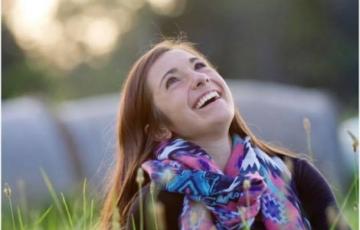
Sonny
The last conversation I had with my daughter Sonny was one that I will never forget. As she sat there exhausted from the leukemia and CDiff and sepsis that was ravaging her body; we talked about how much of a fight she put up. She could only respond with a short, “I know Momma”. To which I replied, “You don’t have to fight anymore baby.” Again, “I know Momma”. I told her that her Poppa was waiting in Heaven on his tractor to take her for a ride like she used to love when she was little.
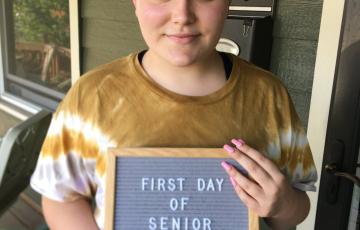
Madeleine
We were lucky. It seems strange to frame it that way, but it's true.
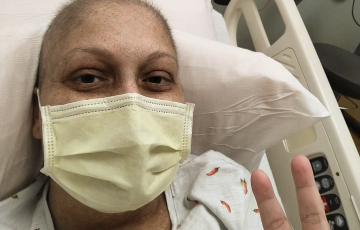
Sara
In May 2019, I was surprised and delighted to find out that I was pregnant. Throughout the summer, I eagerly delved into extensive reading and research on pregnancy and the first-time mom experience. However, this period also brought about a challenging early pregnancy. I found myself short of breath after even short walks, relied on numerous naps, and surprisingly didn't experience intense pregnancy cravings. In fact, I wasn't gaining much weight.
Chemotherapy and Drug Therapy
Chemotherapy is the mainstay of treatment for HL. A combination chemotherapy regimen consists of two or more chemotherapy drugs. Generally, the drugs are dissolved in fluid and usually administered via a peripheral intravenous (IV) line. If finding an accessible vein is problematic, a central line (a port, or a peripherally inserted central venous catheter (a PICC or PIC line) may be used for some HL patients.
Clinical Trials
Taking part in a clinical trial may be the best treatment choice for some acute lymphoblastic leukemia (ALL) patients. Clinical trials are under way for patients at every treatment stage and for patients in remission. Today's standard treatments for cancer are based on earlier clinical trials. The Leukemia & Lymphoma Society continues to invest funds in ALL research.
Click here to read more about clinical trials.
Clinical Trials
When it comes to finding the right treatment for your child's cancer, a clinical trial may be an option. Your child will have access to new or improved therapies under study and not yet on the market. Discuss with your child's doctor the possibility of participating in a clinical trial, where treatment is administered in a safe, closely monitored environment.
Click here to read more about clinical trials.
Side Effects
Cancer therapy for hairy cell leukemia can sometimes produce side effects. For most patients, treatment side effects are temporary and go away once therapy ends. For other patients, side effects can be more severe, sometimes requiring hospitalization.
Before you undergo treatment, talk with your doctor about potential side effects. Drugs and other therapies can prevent or manage many side effects.

Amy
It was July 2014, I got up and went for a quick morning jog before work. It’s Iowa, it was hot and humid, but I was unusually winded after that jog. I figured it was due to being humid outside and finished getting ready to go to work (I was a registered nurse at a physician’s clinic doing triage). During the day, I continued to feel a little winded and noticed I had a cramp in my calf. The nurse in me said to ignore it, that I was overreacting, but I decided to call my physician. She directed me to my local ER for fear of a blood clot.
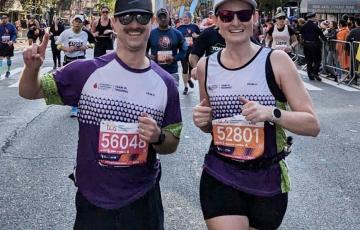
Courtney
In March 2022, I began experiencing unusual symptoms of fatigue, nausea, persistent infections, and bloody noses and gums, but I didn’t think much of it. Following a lucky-timed appointment with my primary care doctor and multiple blood tests, I was diagnosed with acute lymphoblastic leukemia (ALL). Cancer isn’t something an otherwise “healthy” 27-year-old thinks will come out of a doctor’s mouth.
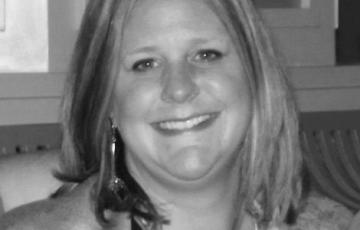
Kristen
In the fall of 2012, Kristen Comer noticed her energy level wasn't as high as it had been, but she thought nothing of it. It wasn’t until the fall of 2013 when she had unidentifiable bruises on her body and no change in her energy levels, that her general practitioner drew labs to determine a diagnosis. After three panels of blood work, Kristen was diagnosed with chronic myeloid leukemia (CML) on December 31, 2013.